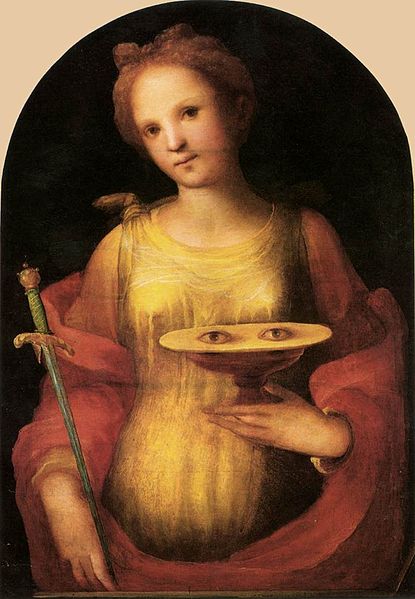Lucia was one of the earliest Christian saints to achieve notoriety, having a widespread following before the 5th century. Because of various traditions associating her name with light, she came to be thought of as the patron of sight and was depicted by medieval artists carrying a dish containing her eyes.
According to apocryphal texts, Lucy came from a wealthy Sicilian family in Syracuse, Sicily Italy. Spurning marriage and worldly goods, however, she vowed to remain a virgin in the tradition of St. Agatha. An angry suitor reported her to the local Roman authorities, who sentenced her to be removed to a brothel and forced into prostitution. This order was thwarted, according to legend, by divine intervention; Lucy became immovable and could not be carried away! She was next condemned to death by fire, but she proved impervious to the flames! Finally, her neck was pierced by a sword and she died.in 304 A.D. at the age of 21.
One of the patron saints of virgins, St. Lucia is venerated on her feast day, by a variety of ceremonies. Sweden's Lucia's Day marks the beginning of the Christmas celebration.
The children serve coffee and special saffron bread to the rest of the family. They walk into the bedroom with the oldest daughter in the front, followed by the next tallest girl, down to the smallest. Then the boys follow with the tallest in the front. As they bring in the Lucia bread and coffee the girls sing "Santa Lucia" (in Swedish, of course), and then the boys sing "Stefan was a Stable-boy." The children then go to their neighbors and teachers and serve them the coffee and bread.
In the reproduction here, note the way she is depicted with her red wrap which in a way follows the shape of the cup she holds. She appears in her whole countenance as a Grail figure, a chalice with herself as the sun.
Saint Lucia, by Domenico Beccafumi, 1521 a High Renaissance recasting of a Gothic iconic image

No comments:
Post a Comment